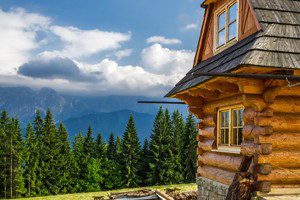- The Tetons are filled with classic routes up beautiful mountains like the Grand Teton, Buck Mountain and Mount Moran.
- Guides are available for many Teton routes.
- Aside from entrance fees, a camping permit, and some hard work and sweat, climbing in the Tetons is 100% free.
Overview
The Tetons have garnered a reputation as a mountaineering destination, and with good reason. From the Grand Teton to Buck Mountain to Mont Moran and more, you’ll find an abundance of classic climbs.
Climbing in the Tetons is characterized by long approaches, sometimes necessitating at least one night of camping or an early alpine start.
Where to go Hiking
Picking a peak to climb is no easy task; the Teton Range has more routes up more mountains than you can shake a stick at, and that’s not even taking into account the endless possibilities for setting new routes. Just to help your brain start whirring, here are a few of the classic peaks you can choose from.
- Grand Teton
The quintessential mountain to climb in the Tetons, the Grand Teton is the range’s highest peak, at 13,770 feet, and is easily identifiable from Jackson Hole Valley. The Owen-Spalding route is the standard go-to, an easy 5.4 with lots of exposure, but check out some of the other faces is you’d like more of a challenge. - Middle Teton
Just south of the Grand Teton, the Middle Teton stands at 12,804 feet. A good peak for beginners, the Southwest Couloir provides an easy, mostly third-class scramble to the top. For experienced climbers, other traditional and aid routes offer more of a challenge. - Buck Mountain
11,938-foot-tall Buck Mountain may not be the tallest peak in the Tetons, but its location gives great views of the Cathedral Group to the north. While the East Ridge is an easy scramble to the top, longer technical routes (most around 5.8 and below) can be found on the various faces. Buck Mountain is a less-popular climb, making it a good spot to go to avoid the crowds that gather around the Grand, South and Middle Tetons. - Mount Moran
Mount Moran’s imposing faces thwarted climbers for years, until it was first ascended in 1922. Since then it has remained one of the more technical peaks of the Tetons, with a long approach and no easy, safe route up. CMC Route is the standard ascent, but requires advanced route-finding and strong mountaineering skills.
Fees & Rentals
The only fees associated with climbing in the Tetons come from entrance costs for Grand Teton National Park (if you choose to climb within the Park) and backcountry camping permits. If you don’t bring all of your own climbing gear, contact one of the local guide services for help.
Hire a Guide
One of the best ways to improve your chances of a successful, and safe, summit is to hire a professional guide. Guides will also be able to take care of any necessary permits, gear and preparations. Whether you plan on completing a long, technical traverse or following one of the standard routes up a classic peak, take a minute to explore the options that guide services provide.
Safety Precautions
- Before attempting any summit in the Tetons, make sure that you have enough clothing, food and water to spend a night out in case of emergency.
- Let others know your planned route and when to expect you back.
- If you plan on spending the night out, bring bear-proof food canisters for food and toiletries and store them away from your tent at night.
- Plan to summit early in order to avoid afternoon thunderstorms; keep an eye on the sky as your climbing and be ready to turn around quickly.
- Bring a water purification system – do not drink from creeks, streams or lakes without treating water first.








